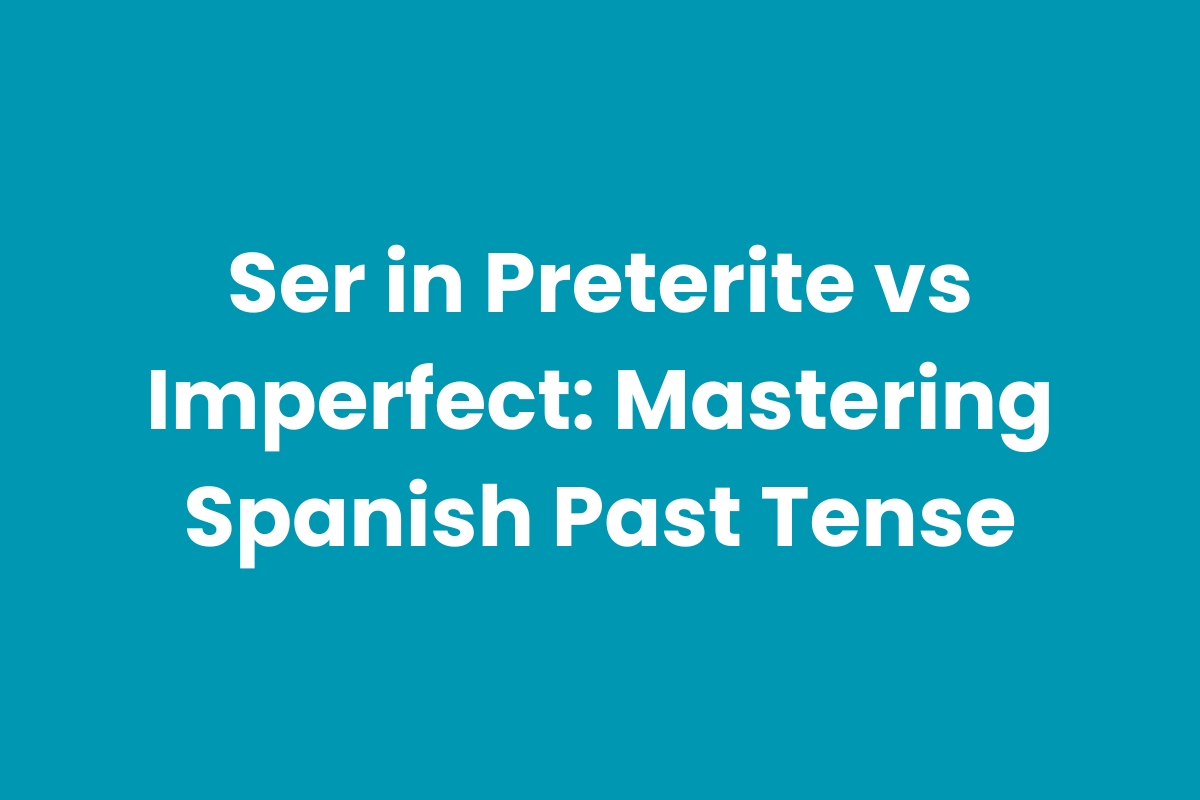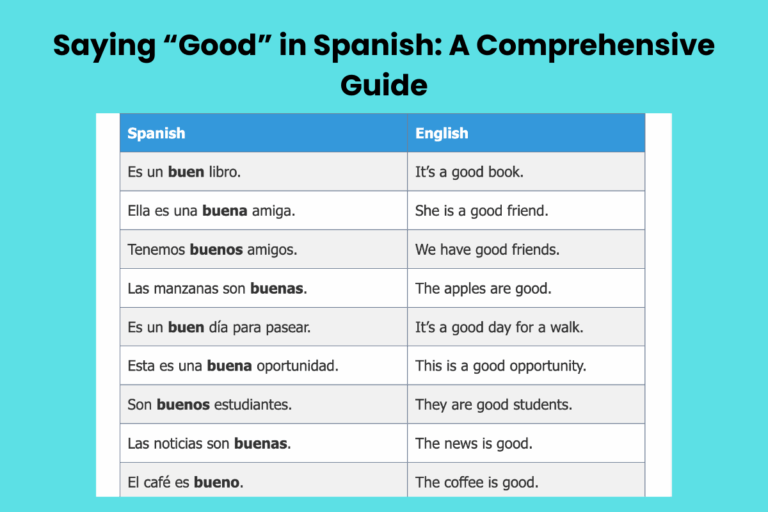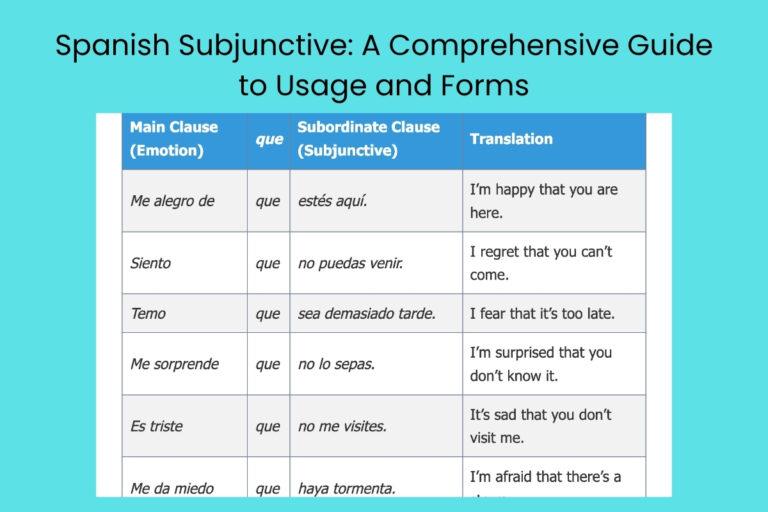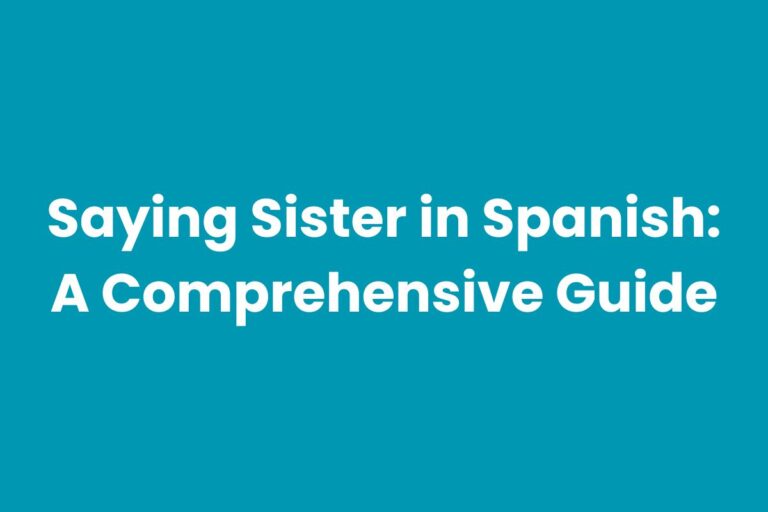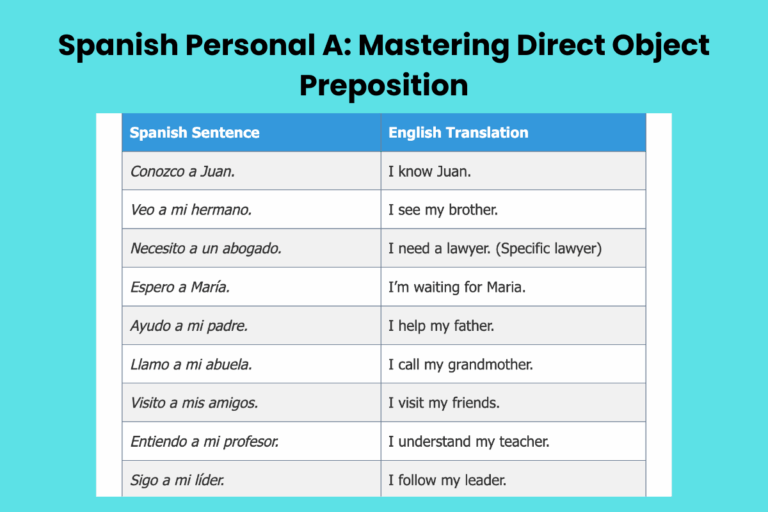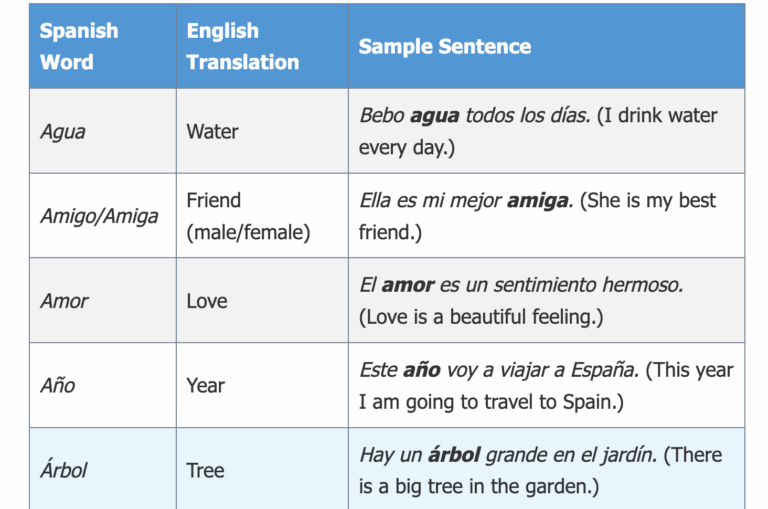Ser in Preterite vs Imperfect: Mastering Spanish Past Tense
Understanding when to use the preterite and imperfect tenses with the Spanish verb ser (to be) is crucial for expressing past states, characteristics, and identities accurately. This distinction is often a source of confusion for Spanish learners, as the choice between these tenses significantly alters the meaning of a sentence. Mastering this concept will enable you to narrate past events with greater precision, convey nuanced descriptions, and avoid common grammatical errors. This guide is designed for students of all levels, from beginners seeking a foundational understanding to advanced learners aiming to refine their fluency and comprehension of Spanish grammar.
Table of Contents
- Introduction
- Definition of Ser in Preterite and Imperfect
- Structural Breakdown
- Types or Categories of Usage
- Examples
- Usage Rules
- Common Mistakes
- Practice Exercises
- Advanced Topics
- FAQ
- Conclusion
Definition of Ser in Preterite and Imperfect
The Spanish verb ser, meaning “to be,” is fundamental to expressing identity, characteristics, origin, and more. When describing past situations, you must choose between the preterite and imperfect tenses. The choice between these tenses significantly impacts the meaning of your sentences. The preterite emphasizes completed actions or events, while the imperfect focuses on ongoing states, descriptions, and habitual actions in the past.
Ser in Preterite
The preterite tense of ser describes a specific instance of “being” that occurred and concluded at a definite point in the past. It’s used to express a change in state, a defined identity at a particular moment, or a completed action regarding someone’s or something’s nature. The preterite of ser focuses on the result or the endpoint of the state.
Ser in Imperfect
The imperfect tense of ser, on the other hand, describes ongoing states, characteristics, or conditions in the past without a specific end point. It paints a picture of what something or someone *was* like over a period of time. It’s used for descriptions, habitual actions, and background information in a narrative. The imperfect provides context and sets the scene, rather than focusing on a completed event.
Structural Breakdown
Understanding the conjugations of ser in both the preterite and imperfect tenses is essential. The structural differences highlight how each tense functions grammatically.
Preterite Conjugation of Ser
The preterite conjugation of ser is irregular, meaning it doesn’t follow the standard conjugation patterns. Here’s the conjugation:
| Pronoun | Preterite Conjugation |
|---|---|
| Yo (I) | Fui |
| Tú (You, informal) | Fuiste |
| Él/Ella/Usted (He/She/You, formal) | Fue |
| Nosotros/Nosotras (We) | Fuimos |
| Vosotros/Vosotras (You, informal plural) | Fuisteis |
| Ellos/Ellas/Ustedes (They/You, formal plural) | Fueron |
Imperfect Conjugation of Ser
The imperfect conjugation of ser is regular, making it easier to learn. It follows a consistent pattern:
| Pronoun | Imperfect Conjugation |
|---|---|
| Yo (I) | Era |
| Tú (You, informal) | Eras |
| Él/Ella/Usted (He/She/You, formal) | Era |
| Nosotros/Nosotras (We) | Éramos |
| Vosotros/Vosotras (You, informal plural) | Erais |
| Ellos/Ellas/Ustedes (They/You, formal plural) | Eran |
Types or Categories of Usage
The choice between ser in the preterite and imperfect depends on the context and the intended meaning. Understanding the specific categories of usage helps in making the correct choice.
Completed Actions (Preterite)
Use the preterite tense of ser to describe a completed action or a change in condition that occurred at a specific point in the past. This often involves a transformation or a realization of something.
Descriptions and Ongoing States (Imperfect)
Use the imperfect tense of ser to describe what something or someone was like in the past. This includes physical descriptions, personality traits, and ongoing conditions. It provides background information and paints a picture of the past.
Specific Time Periods (Preterite)
The preterite is used when indicating that something *was* something else for a specific, limited amount of time. This could be a duration with a clear beginning and end.
Habitual Actions in the Past (Imperfect)
The imperfect tense is used to describe actions or states that were habitual or repetitive in the past. This implies that something was a regular occurrence.
Age in the Past (Imperfect)
When stating someone’s age in the past, the imperfect tense of ser is always used. Age is considered a continuous state rather than a completed action.
Examples
The following examples illustrate the different uses of ser in the preterite and imperfect tenses.
Ser in Preterite Examples
These examples highlight situations where ser in the preterite is appropriate, focusing on completed actions or changes in state.
| Spanish Sentence | English Translation | Explanation |
|---|---|---|
| La fiesta fue increíble. | The party was incredible. | Describes a specific party that was incredible and is now over. |
| El concierto fue ayer. | The concert was yesterday. | Indicates that the concert took place on a specific day and is finished. |
| Mi abuelo fue médico. | My grandfather was a doctor. | Indicates that my grandfather was a doctor at some point in his life (and is now deceased, or no longer practicing). |
| La película fue aburrida. | The movie was boring. | Describes a specific movie that was boring from beginning to end. |
| Ese día fue el peor de mi vida. | That day was the worst day of my life. | Describes a specific day that was the worst and is now over. |
| El examen fue muy difícil. | The exam was very difficult. | Indicates a particular exam that was difficult and is now completed. |
| La reunión fue un éxito. | The meeting was a success. | Describes a specific meeting that was successful. |
| El viaje fue inolvidable. | The trip was unforgettable. | Indicates a specific trip that was unforgettable. |
| La clase fue interesante. | The class was interesting. | Describes a specific class that was interesting. |
| La cena fue deliciosa. | The dinner was delicious. | Describes a specific dinner that was delicious and is now finished. |
| El problema fue solucionado. | The problem was solved. | Indicates that a specific problem was resolved. |
| La decisión fue difícil. | The decision was difficult. | Describes a particular decision that was hard to make. |
| El resultado fue sorprendente. | The result was surprising. | Indicates a specific result that was surprising. |
| El regalo fue perfecto. | The gift was perfect. | Describes a specific gift that was perfect. |
| La respuesta fue incorrecta. | The answer was incorrect. | Indicates a specific answer that was wrong. |
| El error fue evidente. | The mistake was obvious. | Describes a specific mistake that was evident. |
| La explicación fue clara. | The explanation was clear. | Indicates a specific explanation that was clear. |
| El evento fue un fracaso. | The event was a failure. | Describes a particular event that was a failure. |
| La experiencia fue única. | The experience was unique. | Indicates a specific experience that was unique. |
| La oportunidad fue aprovechada. | The opportunity was taken. | Describes a specific opportunity that was seized. |
| El secreto fue revelado. | The secret was revealed. | Indicates that a specific secret was disclosed. |
| La verdad fue descubierta. | The truth was discovered. | Describes that a specific truth was found. |
| La solución fue encontrada. | The solution was found. | Indicates that a specific solution was located. |
| El misterio fue resuelto. | The mystery was solved. | Describes that a specific mystery was solved. |
Ser in Imperfect Examples
These examples demonstrate the use of ser in the imperfect tense to describe ongoing states, characteristics, and habitual actions in the past.
| Spanish Sentence | English Translation | Explanation |
|---|---|---|
| Cuando era niño, era muy tímido. | When I was a child, I was very shy. | Describes a continuous state of being shy during childhood. |
| Antes, la vida era más sencilla. | Before, life was simpler. | Describes a general state of life being simpler in the past. |
| Ella era alta y rubia. | She was tall and blonde. | Describes her physical characteristics in the past. |
| Él era muy inteligente. | He was very intelligent. | Describes his intelligence as a characteristic in the past. |
| Nosotros éramos buenos amigos. | We were good friends. | Describes a state of being good friends in the past. |
| La casa era grande y antigua. | The house was big and old. | Describes the characteristics of the house in the past. |
| El clima era agradable. | The weather was pleasant. | Describes the state of the weather in the past. |
| La música era muy popular en esa época. | The music was very popular at that time. | Describes the popularity of the music during that era. |
| El profesor era estricto. | The professor was strict. | Describes the professor’s personality in the past. |
| La comida era deliciosa. | The food was delicious. | Describes the quality of the food in the past. |
| El libro era muy interesante. | The book was very interesting. | Describes the book’s quality in the past. |
| La ciudad era tranquila. | The city was quiet. | Describes the state of the city in the past. |
| El coche era rojo. | The car was red. | Describes the car’s color in the past. |
| La película era emocionante. | The movie was exciting. | Describes the movie’s quality in the past. |
| El trabajo era difícil. | The job was difficult. | Describes the job’s difficulty in the past. |
| La situación era complicada. | The situation was complicated. | Describes the state of the situation in the past. |
| El problema era grave. | The problem was serious. | Describes the severity of the problem in the past. |
| La solución era evidente. | The solution was obvious. | Describes the obviousness of the solution in the past. |
| El secreto era guardado. | The secret was kept. | Describes the state of the secret being kept in the past. |
| La verdad era desconocida. | The truth was unknown. | Describes the state of the truth being unknown in the past. |
| El misterio era intrigante. | The mystery was intriguing. | Describes the intriguing nature of the mystery in the past. |
| La oportunidad era única. | The opportunity was unique. | Describes the unique nature of the opportunity in the past. |
| El evento era esperado. | The event was expected. | Describes the anticipation of the event in the past. |
| La experiencia era enriquecedora. | The experience was enriching. | Describes the enriching nature of the experience in the past. |
Comparison: Preterite vs. Imperfect Examples
These examples illustrate the difference in meaning when using ser in the preterite versus the imperfect tense.
| Sentence with Preterite | Sentence with Imperfect | Translation (Preterite) | Translation (Imperfect) | Explanation |
|---|---|---|---|---|
| La clase fue a las diez. | La clase era a las diez. | The class was at ten (specifically). | The class was (usually) at ten. | Preterite indicates a specific time, while imperfect indicates a habitual time. |
| Él fue mi novio. | Él era mi novio. | He was my boyfriend (for a specific period). | He used to be my boyfriend. | Preterite indicates a defined relationship that ended, while imperfect indicates a past relationship. |
| La película fue buena. | La película era buena. | The movie was good (at that specific time). | The movie was generally good. | Preterite describes the movie at a specific viewing, while imperfect describes its general quality. |
| El problema fue complicado. | El problema era complicado. | The problem became complicated (at a certain point). | The problem was complicated (generally). | Preterite indicates when the problem became complicated, while imperfect describes its nature. |
| La fiesta fue divertida. | La fiesta era divertida. | The party was fun (on that particular occasion). | The party was generally fun (usually). | Preterite refers to a specific party, while imperfect describes the typical party. |
| El viaje fue caro. | El viaje era caro. | The trip was expensive (at that time). | The trip was generally expensive. | Preterite indicates the cost of a specific trip, while imperfect describes the general expense. |
| La comida fue deliciosa. | La comida era deliciosa. | The meal was delicious (on that occasion). | The food was generally delicious (there). | Preterite describes a specific meal, while imperfect describes the general quality of the food. |
| El concierto fue increíble. | El concierto era increíble. | The concert was incredible (that night). | The concert was generally incredible (always). | Preterite describes a specific concert, while imperfect describes the general quality of the concert. |
| La reunión fue productiva. | La reunión era productiva. | The meeting was productive (on that occasion). | The meeting was generally productive (usually). | Preterite describes a specific meeting, while imperfect describes the typical meeting. |
| El día fue largo. | El día era largo. | The day was long (on that particular day). | The day was generally long (usually). | Preterite refers to a specific day, while imperfect describes the typical length of the day. |
| La respuesta fue correcta. | La respuesta era correcta. | The answer was correct (in that instance). | The answer was generally correct. | Preterite describes a specific answer, while imperfect describes the answer in general. |
| El secreto fue bien guardado. | El secreto era bien guardado. | The secret was well-kept (at that time). | The secret was generally well-kept. | Preterite describes a specific time, while imperfect describes the general state. |
| La verdad fue revelada. | La verdad era desconocida. | The truth was revealed (at that moment). | The truth was unknown (before). | Preterite describes the moment of revelation, while imperfect describes the prior state. |
| La oportunidad fue aprovechada. | La oportunidad era única. | The opportunity was seized (then). | The opportunity was unique (generally). | Preterite describes the act of seizing, while imperfect describes the nature of the opportunity. |
Usage Rules
Understanding the specific rules governing the use of ser in the preterite and imperfect is crucial for accurate communication.
General Rules for Preterite and Imperfect
- Preterite: Use for completed actions, specific events, and changes of state with a clear beginning and end.
- Imperfect: Use for descriptions, ongoing states, habitual actions, and providing background information.
Exceptions and Special Cases
While the general rules provide a solid foundation, there are exceptions and special cases to consider. Certain contexts might require a different tense than initially expected.
For instance, using the preterite to describe a characteristic might imply a sudden change, whereas the imperfect would imply a more enduring quality.
Common Mistakes
Several common mistakes can occur when using ser in the preterite and imperfect tenses. Being aware of these errors can help you avoid them.
Confusing Completed Actions with Descriptions
One common mistake is using the preterite when you should be using the imperfect to describe a state or characteristic. For example, saying “Ayer fui cansado” (Yesterday I *was* tired – preterite) is incorrect; the correct form is “Ayer estaba cansado” (Yesterday I *was* tired – imperfect), because you are describing a temporary state.
Incorrect Conjugation
Another frequent error is using the wrong conjugation for the preterite or imperfect tense. It’s crucial to memorize the correct forms and practice using them in context.
For example, using the incorrect form *“Yo era”* (imperfect) when you should be using *“Yo fui”* (preterite) can change the meaning of the sentence.
Misunderstanding Context
Misinterpreting the context of a sentence can lead to incorrect tense usage. Always consider whether you are describing a completed action or an ongoing state before choosing between the preterite and imperfect.
For example, if you say *“La fiesta fue divertida”* (The party was fun – preterite), you’re referring to a specific party that is over. If you say *“La fiesta era divertida”* (The party was fun – imperfect), you’re describing the general nature of the party (usually or always).
If you meant the former, you’d be wrong.
Practice Exercises
These exercises will help you practice using ser in the preterite and imperfect tenses.
Exercise 1: Choose the Correct Tense
Choose the correct tense (preterite or imperfect) for each sentence.
| Question | Answer Choices | Correct Answer |
|---|---|---|
| Cuando era joven, yo ____ muy deportista. | a) fui, b) era | b) era |
| La película ____ muy interesante. | a) fue, b) era | a) fue |
| Ayer ____ un día muy largo. | a) fue, b) era | a) fue |
| Antes, la vida ____ más tranquila. | a) fue, b) era | b) era |
| El concierto ____ anoche. | a) fue, b) era | a) fue |
| Mi abuela ____ profesora. | a) fue, b) era | a) fue |
| La casa ____ grande y antigua. | a) fue, b) era | b) era |
| La cena ____ deliciosa. | a) fue, b) era | a) fue |
| El coche ____ rojo. | a) fue, b) era | b) era |
| El examen ____ difícil. | a) fue, b) era | a) fue |
Exercise 2: Fill in the Blanks
Fill in the blanks with the correct form of ser in either the preterite or imperfect tense.
| Question | Correct Answer |
|---|---|
| Ayer la fiesta ____ muy divertida. | fue |
| De niño, yo ____ muy travieso. | era |
| El problema ____ muy grave. | fue |
| Antes, nosotros ____ buenos amigos. | éramos |
| El viaje ____ inolvidable. | fue |
| La clase ____ a las nueve de la mañana. | era |
| El secreto ____ bien guardado. | fue |
| La oportunidad ____ única. | era |
| El evento ____ un éxito. | fue |
| La verdad ____ desconocida. | era |
Exercise 3: Translate the Sentences
Translate the following sentences into Spanish, using the correct tense of ser.
| English Sentence | Spanish Translation |
|---|---|
| The movie was very long. | La película fue muy larga. |
| I was very happy when I was a child. | Yo era muy feliz cuando era niño. |
| The concert was last night. | El concierto fue anoche. |
| Life was simpler before. | La vida era más sencilla antes. |
| The problem was serious. | El problema era grave. |
| The trip was unforgettable. | El viaje fue inolvidable. |
| The class was at seven in the evening. | La clase era a las siete de la tarde. |
| The secret was well kept. | El secreto fue bien guardado. |
| The opportunity was unique. | La oportunidad era única. |
| The event was a success. | El evento fue un éxito. |
Advanced Topics
For advanced learners, understanding narrative shifts and the subjunctive mood with ser can add depth to your Spanish comprehension.
Narrative Shifts Between Tenses
In storytelling, switching between the preterite and imperfect tenses can create a dynamic narrative. The imperfect sets the scene and provides background information, while the preterite advances the plot with specific events.
Mastering these shifts enhances your ability to create vivid and engaging stories.
Imperfect Subjunctive with Ser
The imperfect subjunctive of ser is used in hypothetical or conditional clauses to express what something *would be* or *would have been* under different circumstances. This is an advanced grammatical concept that allows for more nuanced expression.
FAQ
Here are some frequently asked questions about using ser in the preterite and imperfect tenses.
- When do I use the preterite tense with ser?
Use the preterite tense of ser to describe completed actions, specific events, or changes of state with a clear beginning and end. It indicates a specific instance of “being” that occurred and concluded at a definite point in the past. For example, “La fiesta fue increíble” (The party was incredible) describes a specific party that has ended.
- When do I use the imperfect tense with ser?
Use the imperfect tense of ser to describe ongoing states, characteristics, or habitual actions in the past. It paints a picture of what something or someone was like over a period of time without a specific end point. For example, “Cuando era niño, era muy tímido” (When I was a child, I was very shy) describes a continuous state of being shy during childhood.
- How do I know if something is a completed action or an ongoing state?
Consider whether the action or state has a defined end point. If it does, use the preterite. If it’s a description or a continuous state without a clear end, use the imperfect. Think about whether you’re reporting on a specific instance or giving background information.
- What’s the difference between “fue” and “era”?
“Fue” is the preterite form of ser and indicates a completed action or a specific event. “Era” is the imperfect form and describes an ongoing state, characteristic, or habitual action in the past. For example, “La clase fue a las diez” (The class was at ten – specifically) uses the preterite, while “La clase era a las diez” (The class was usually at ten) uses the imperfect.
- Can I use the preterite to describe someone’s personality?
Generally, no. The imperfect is usually used to describe someone’s personality in the past, as it represents an ongoing characteristic. Using the preterite might imply a sudden change in personality or a specific instance where they exhibited a certain trait. To describe someone’s personality in the past use the imperfect. For example, “Él era muy inteligente” (He was very intelligent) describes his general intelligence in the past.
- Is it possible to use both preterite and imperfect in the same sentence with ser?
Yes, it is possible and often necessary to use both tenses in the same sentence to provide context and describe events. The imperfect sets the scene, describing what was happening or the state of things, while the preterite describes specific actions that occurred within that context. For example: “Era una noche oscura cuando fue atacado” (It was a dark night when he was attacked). The imperfect “era” describes the state of the night, while the preterite “fue atacado” describes the specific action of being attacked.
- How does the context of a sentence affect the choice between preterite and imperfect?
The context is crucial. Consider what you are trying to convey. Are you describing a specific event with a clear end, or are you providing background information or describing a continuous state? If you’re focused on a specific occurrence, use the preterite. If you’re setting the scene or describing ongoing conditions, use
the imperfect.
- Are there any regional differences in the usage of ser in the preterite and imperfect?
While the general rules apply across Spanish-speaking regions, there might be slight variations in usage based on regional dialects. However, the core principles of using the preterite for completed actions and the imperfect for ongoing states remain consistent.
- How can I improve my ability to choose the correct tense of ser?
Practice is key. Work through exercises, read Spanish texts, and pay attention to how native speakers use ser in different contexts. Ask for feedback from teachers or native speakers to identify and correct any recurring errors. Immersion in the language and consistent practice will significantly improve your understanding and usage.
- Does the use of ser in preterite or imperfect change the meaning of adjectives?
Yes, the choice between preterite and imperfect with ser can subtly change the meaning of adjectives. The preterite often implies a specific instance or a change in state, while the imperfect describes a general or ongoing quality. For example, “La película fue buena” (The movie was good – at that specific time) uses the preterite, while “La película era buena” (The movie was generally good) uses the imperfect to describe its general quality.
Conclusion
Mastering the use of ser in the preterite and imperfect tenses is essential for expressing past states and characteristics accurately in Spanish. By understanding the structural differences, types of usage, and common mistakes, you can significantly improve your fluency and comprehension. Consistent practice, attention to context, and awareness of the nuances between these tenses will enable you to communicate more effectively and confidently in Spanish. Keep practicing and refining your skills, and you’ll find that distinguishing between the preterite and imperfect becomes second nature.

